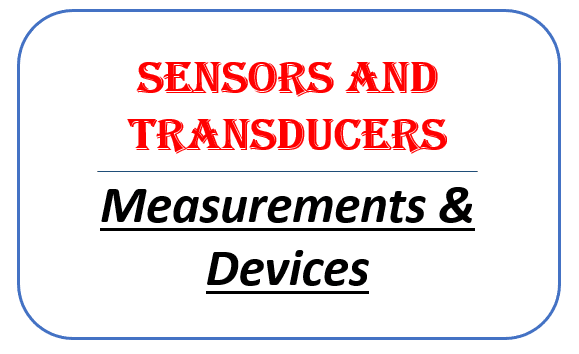The definition of the sensor and transducer
A sensor is any device, module, machine, or subsystem whose purpose is to detect events or changes in the surrounding environment and send the information to other electronics, frequently a computer processor. A sensor is always used with other electronics.
A transducer is a device that senses the measured quantity and outputs an electrical signal corresponding to the measured quantity. That electrical signal can be then measured by an external measuring device.
The difference between a sensor and a transducer
Both a sensor and a transducer are used to sense physical, chemical, or any other quantities. However; the transducer converts the measured quantity into an electrical signal while the sensor doesn’t do that. It just sends the information to other electronics.
The function of sensors and transducers
Sensors sense the physical changes that occur in the surrounding environment like temperature, and light while transducers convert the sensed quantities into electrical signals that can be measured, amplified, and transmitted. So finally, they can be used in automation, measurement, and control systems.
Where sensors and transducers are used?
Sensors and transducers are used in automation, measurement, and control systems, where physical quantities (energy, force, torque, light, motion, position, etc.) are needed to be converted to electrical signals.
Criteria for selecting sensors and transducers
- The measurement range.
- Sensitivity: the response of the sensor or the transducer to the slightest change.
- The Interaction with frequency.
- Proportionality with the surrounding conditions (temperature, atmospheric pressure, magnetic and electric fields...).
- Measurement accuracy: which means “how close the measured value is to the true value”. Measurement accuracy may be affected over time due to repeated measurements and calibration errors.
- Proportionality with the conditions of use: The weight and dimensions of the sensor or the transducer must be taken into consideration.
- Dimensions of the conductors (the conductor's length, the conductor's cross-sectional area, noise ratio of the measurement signal, especially if a signal amplifier is used).
Basic Types of Transducers
- Resistive position transducer.
- Strain gauge transducer.
- Inductive transducers such as
- Tachometer.
- Electro-magnetic transducer.
- Capacitive transducers such as.
- Rotational movement transducer.
- Linear movement transducer.
- Pressure transducer.
- Piezoelectric transducer.
- Thermo transducers which can be classified into 3 Types:
- Resistance thermometer.
- Thermo Couple.
- Thermistor.


